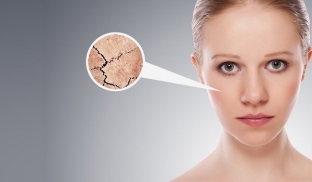Diabetes mellitus – one of the most common metabolic diseases in the world.
According to the WHO, about 350 million people suffer from this pathology. As a rule, diabetes begins imperceptibly, when a person does not suspect at all that he is sick. In order to realistically perceive how serious the problem is, we offer you the following WHO statistics:
- About 350 million people worldwide have diabetes;
- diabetes is diagnosed every 10 seconds;
- every 10 seconds a person in the world dies from complications of diabetes;
- every 10 seconds on planet Earth, a human leg or arm is amputated due to complications of diabetes;
- about 500,000 children under 15 years of age are diagnosed with type 1 diabetes;
- Approximately 200 children develop type 1 diabetes every day;
- 70% of the insulin produced is used to treat diabetes by 16% of the world's population;
- until 2030, the number of people suffering from diabetes is projected to increase to 400 million.
According to these statistics, we can safely conclude that the problem was, is and, according to WHO forecasts, will increase its scale. Therefore, in order to at least somehow resist it, you need to be able to recognize the signs of diabetes. As they say, you need to know the enemy in person!
7 possible signs that may indicate diabetes
Among the many clinical signs of diabetes mellitus, 7 main ones can be distinguished:
- Frequent drinking of water, intense thirst
In diabetes the human body tries by all means to normalize the blood sugar level by filtering it, resulting in an increase in the concentration of glucose in the urine. As a result, a person has frequent urge to urinate. Therefore, in order to bring sugar back to normal, the body sends signals to the brain, namely to the hypothalamus, that it is necessary to replenish the lost amount of fluid. As a result of all these processes, a person develops a strong feeling of thirst, which is accompanied by the consumption of fluid in large quantities.
- Dry skin
Since the body loses a lot of fluid in diabetes, it needs to use any source to restore its water balance. One such source is the skin. Therefore, the second characteristic sign of diabetes – dry skin.

- Increased appetite
People with diabetes almost never leave the feeling of hunger. A person consumes food in huge quantities, but there is no insulin, which will allow glucose to enter the cell and allow it to perform its functions, as a result of which the feeling of hunger no longer arises.
- Weakness
Increased fatigue, lethargy throughout the day, feeling "broken" After sleep. All these signs characterize the picture of ordinary fatigue, but you should not take this point too seriously, because this condition is normal after a hard day's work. It is worth paying attention to this only when such symptoms are supplemented by other signs characteristic of diabetes mellitus.
- Weight loss
Very often, diabetes mellitus is accompanied by weight loss. The first reason – this is the loss of body fluid as a result of frequent urination, the second reason may be a metabolic disorder.
- Impaired wound healing
With diabetes, the body is not able to work at full capacity, and many organs suffer. The reason for poor wound healing and increased susceptibility to infectious diseases is a decrease in the protective functions of the body, namely immunity.
If someone close to you noticed your bad breath, you should immediately visit a doctor. The level of glucose in the body is increased, but our brain does not understand this and continues to increase its level by splitting fats. These processes take place in the liver. As a result of the breakdown of fats, ketone bodies are formed, consisting of acetone, acetoacetic acid and beta-hydroxybutyrate. An increase in the amount of these substances in the body leads to the appearance of bad breath.
These 7 signs are the most typical for diabetes. Timely diagnosis of the disease will help you avoid adverse consequences.
What to do if you notice such symptoms in yourself?
The only right decision is to contact your doctor. You can usually visit your general practitioner at the place of residence, and he, having collected an anamnesis, will advise you to contact a narrow specialist.

As mentioned, the disease is very subtle and many people do not pay enough attention to the obvious symptoms. Therefore, we recommend that you carefully monitor all the changes in your body – sometimes they can indicate the development of diabetes mellitus, which responds well to treatment.
REMEMBER: The abuse of foods containing a large amount of sugars is the root cause of the development of diabetes.
Remember, you and only you are responsible for your health, everything can be changed if you pay attention to changes in your body in time. Therefore, be vigilant and at the slightest manifestation of diabetes, do not wait and do not self-medicate, but contact a specialist. Stay healthy!






Add a comment